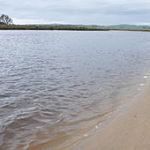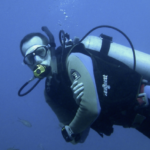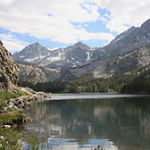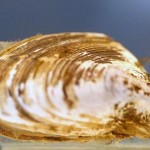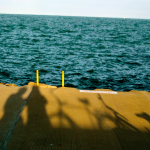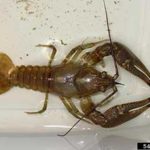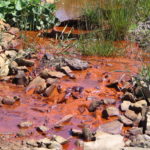Invasive mussels muscle their way into the Great Lakes—listen up for the scoop on why that’s scarier than it might sound. You might think a creature the size of a dime is no match for a freshwater system the size of Texas, but quagga mussels are prolific breeders. Multiply one by trillions, and you get mussels …
Permanent link to this article: http://www.currentcast.org/creature-features/multiplying-mussels-attack/
May 21
Why We Should All Swoon for the Common Loon
There’s nothing common about common loons in the Great Lakes—listen up: An ode to the loon With their distinctive red eyes, black-and-white coloring and eerie call, the uncommon loon might be a better moniker for these wonderfully unusual birds. What else is cool about this aquatic migratory creature? Its solid bones make for champion diving, …
Permanent link to this article: http://www.currentcast.org/creature-features/why-we-should-all-swoon-for-the-common-loon/
May 20
Great Lakes, Great Magic
There’s a magical, rich resource right in America’s backyard—listen up, Great Lakes lovers: It’s no illusion that the Great Lakes are awesome. Anthropologist Loren Eiseley wrote, “If there is magic on this planet, it’s contained in water.” If so, the Great Lakes are among the most magical places on earth. They hold six quadrillion gallons of fresh …
Permanent link to this article: http://www.currentcast.org/water-conservation-2/great-lakes-great-magic/
May 19
Native and Invasive Crayfish Square Off
Non-native crayfish upset the natural balance in streams: Crayfish are an important part of the food web in streams. But in Pennsylvania, an invasive species called rusty crayfish is taking over. And in some areas, they’re so dense they stack on top of each other. Dave Lieb with the Western Pennsylvania Conservancy says rusty crayfish …
Permanent link to this article: http://www.currentcast.org/creature-features/native-and-invasive-crayfish-square-off/
May 18
Crayons and Clean Water
The colorful side of water remediation. In Pennsylvania, abandoned coal mines have left a dirty legacy… thousands of miles of streams polluted by acid mine drainage. Wetlands can be used to treat the water. But in the process, they accumulate a lot of metal sludge that has to be removed – often at great expense. …
Permanent link to this article: http://www.currentcast.org/toxic-contamination/crayons-and-clean-water/

